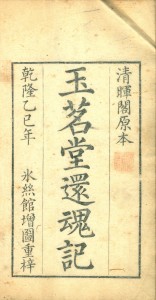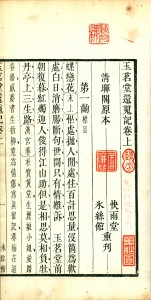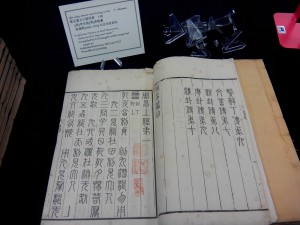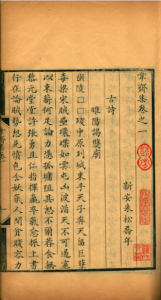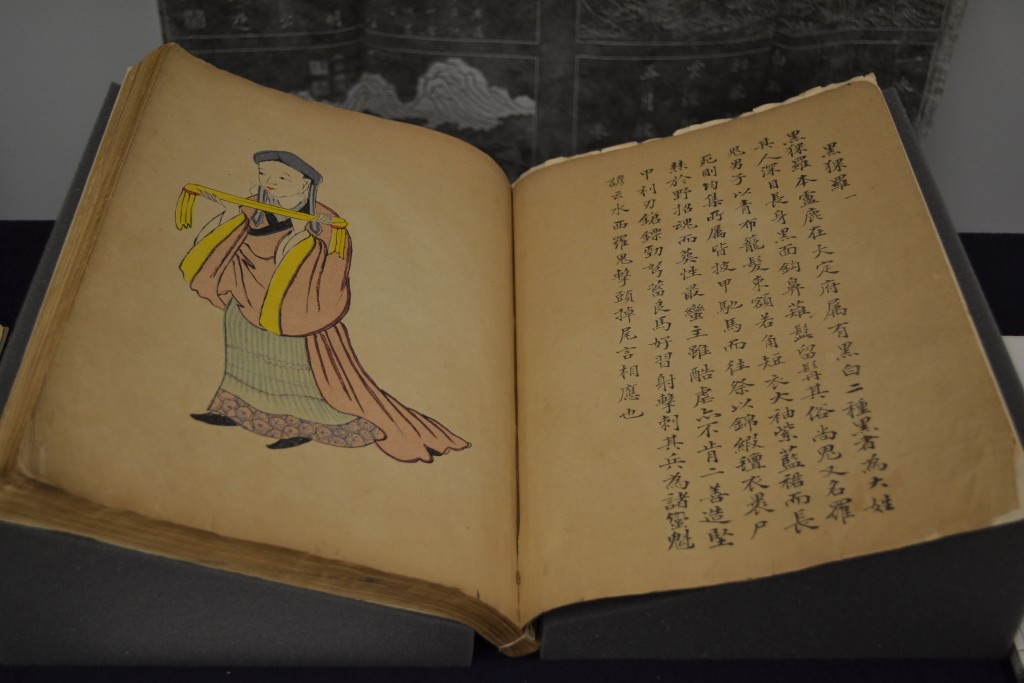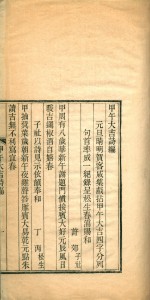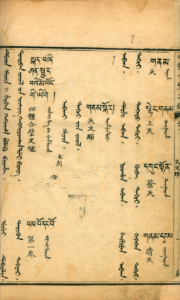The oldest books cataloged at UW as part of the CLIR project are these five books dating from the Ming dynasty (1368–1644).
顏魯公文集 (Yan Lugong wen ji)
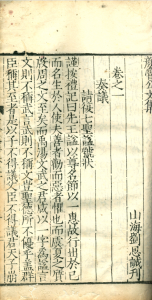
《顏魯公文集》 四冊
顔眞卿
明萬曆十七年[1589]劉思誠刻本
“Collected works of Yan Lugong” (4 volumes)
By Yan Zhenqing (also known as Yan Lugong)
Published in 1589 by Liu Sicheng
Woodblock printing
朱文公校昌黎先生文集 (Zhu Wen gong xiao Changli xian sheng wen ji)

《朱文公校昌黎先生文集》 四冊
韓愈
明末[1605-1644]天德堂刻本
“Collected works of Han Yu, verified by Zhu Xi” (4 volumes)
By Han Yu (also known as Han Changli)
Published between 1605 and 1644 by Tian de tang
Woodblock printing
眉公筆記 (Meigong bi ji)
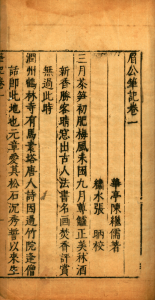
《眉公筆記》 二冊
陳繼儒
萬曆[1573-1620]沈氏尚白齋刻本
“Meigong’s notes” (2 volumes)
By Chen Jiru (also known as Chen Meigong)
Published between 1573 and 1620 by Shen shi shang bai zhai
Woodblock printing
松陵集 (Song ling ji)

《松陵集》 五冊
陸龜蒙, 皮日休[等]
天啟崇禎間[1621-1644]常熟毛晉汲古閣刻本
“Song ling ji” (5 volumes)
By Lu Guimeng, Pi Rixiu, etc.
Published between 1621 and 1644 by Mao Jin’s Ji gu ge
Woodblock printing
Collection of poetry from Tang dynasty writers including Lu Guimeng and Pi Rixiu
輟畊錄 (Chuo geng lu)

《輟畊錄》 八冊
陶宗儀
明崇禎[1628-1644]廣文堂刻本
“Chuo geng lu” (8 volumes)
By Tao Zongyi
Published between 1628 and 1644 by Guang wen tang
Woodblock printing
Selected anecdotes on history, culture, military, and politics from 1100 to 1368






